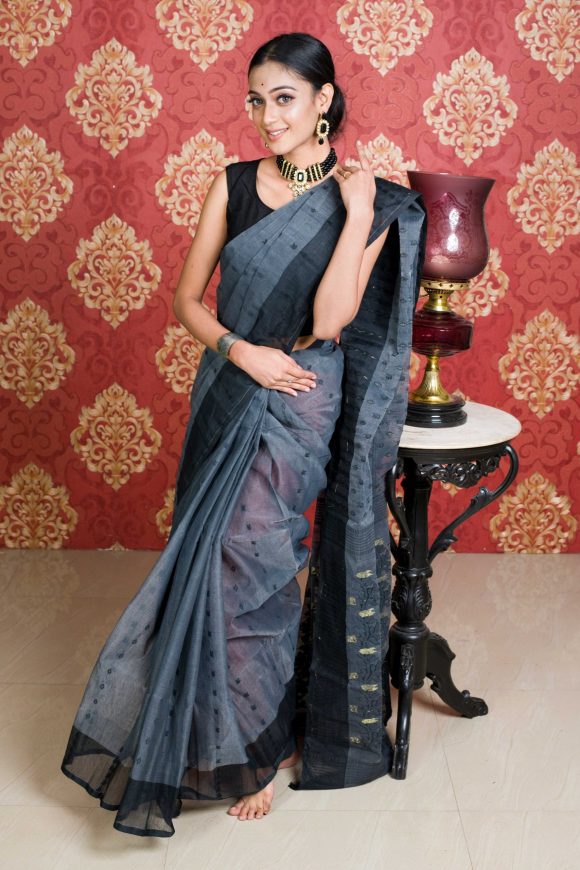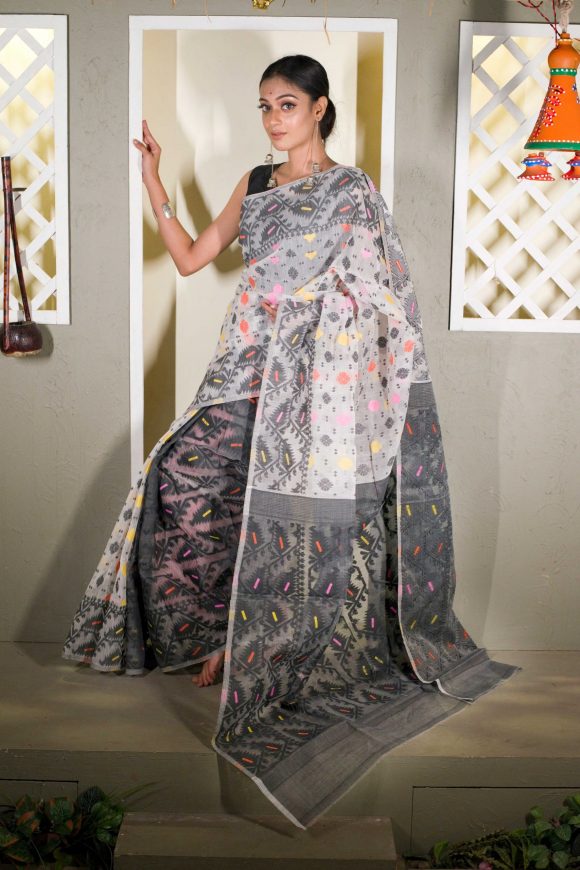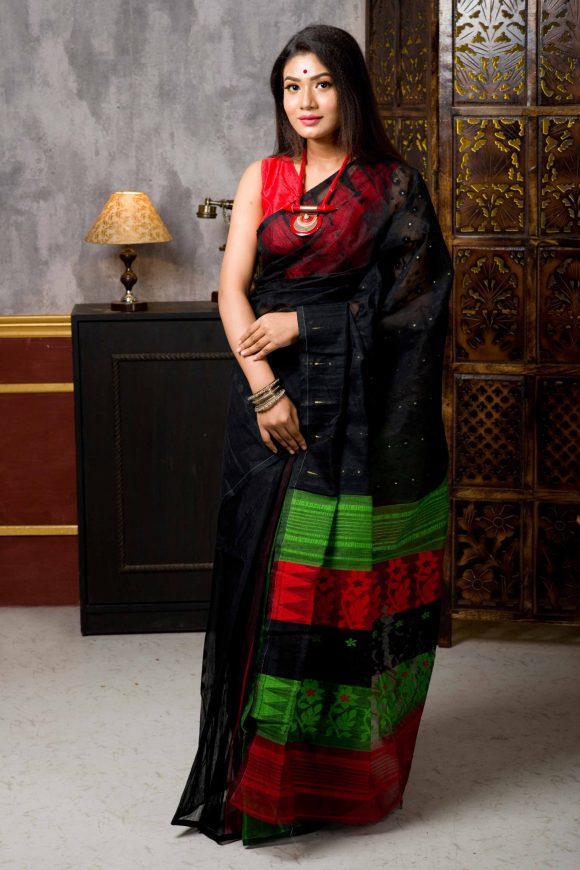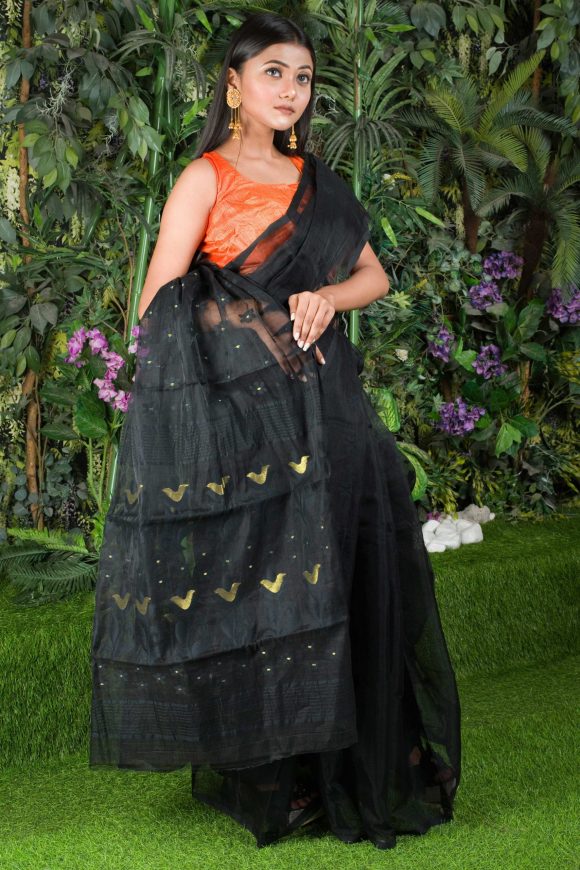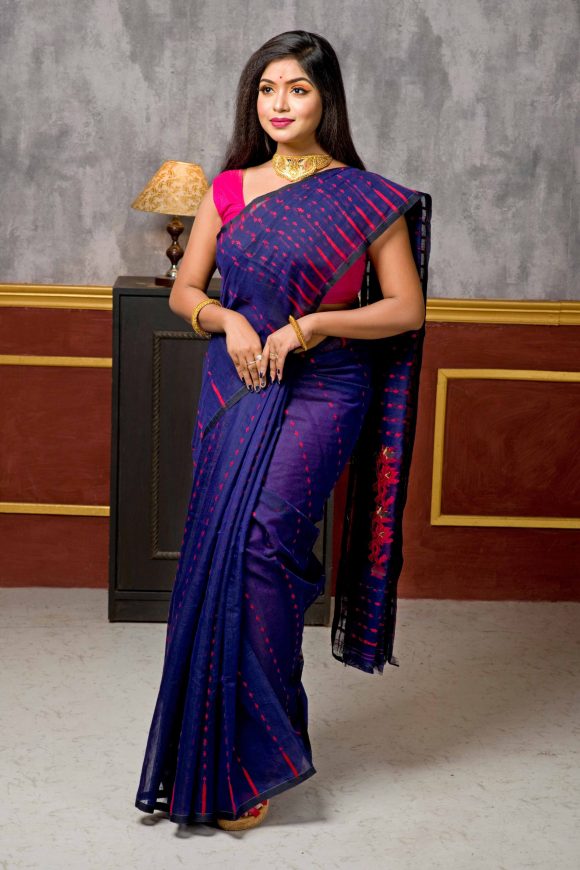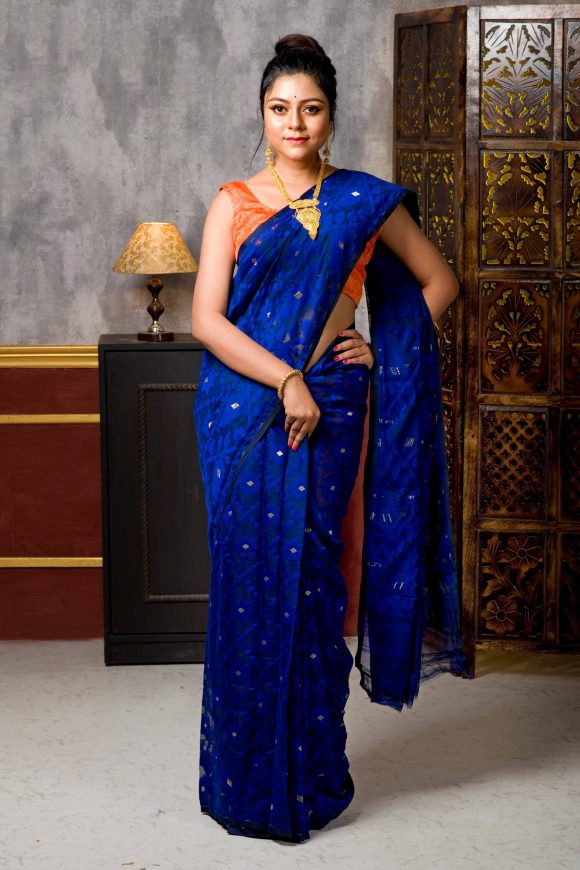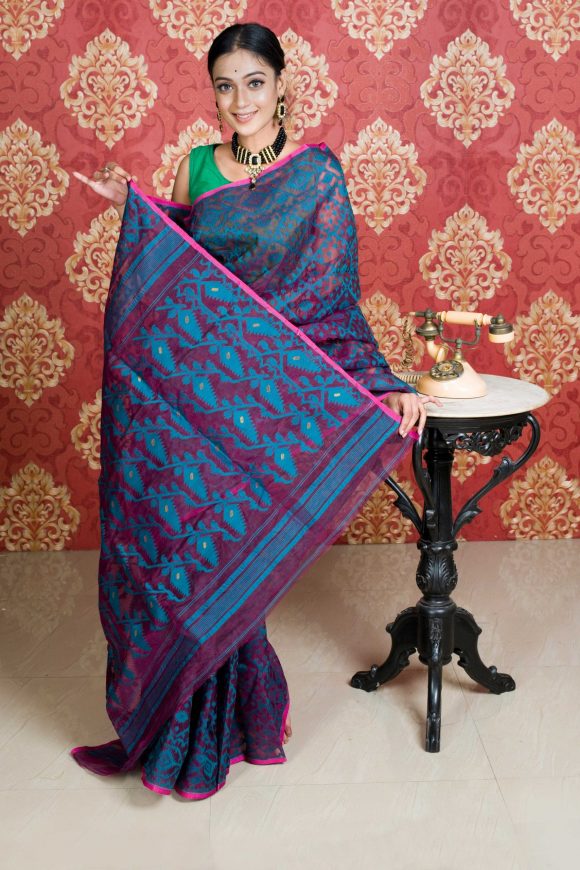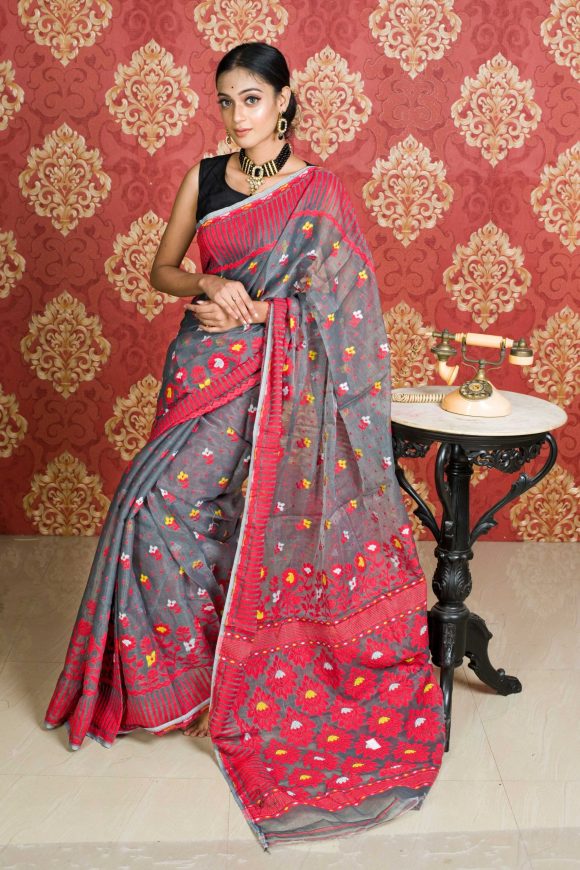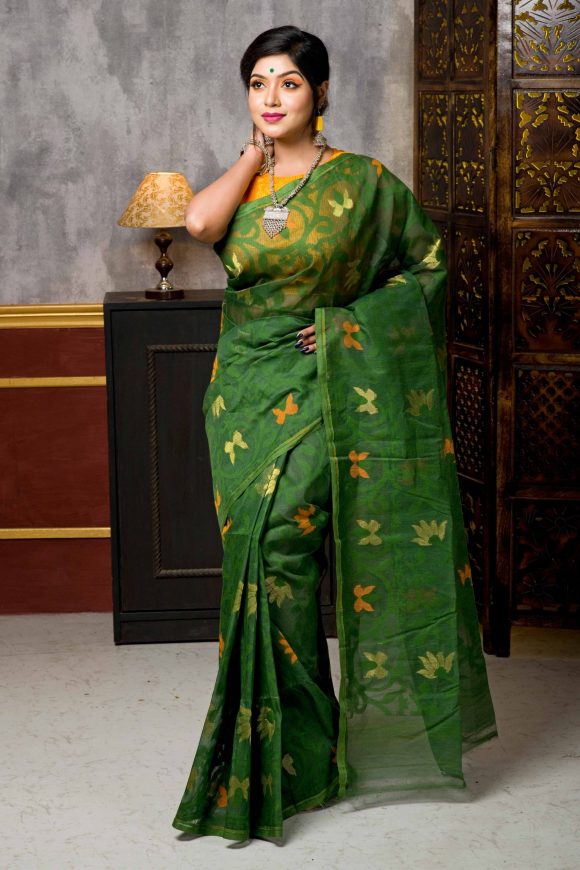Jamdani
Jamdani Sarees: When Passion for Art Meets Dedication and Grit
Jamdani saree is considered to be one of the most prized possessions a saree lover can have. If one considers this as an overestimation, one needs to take a close look at its designs and explore months of the toil of artisans.
You will be amazed to know how a saree type has resulted from an art form enriched with an interesting history. It not only reflects the fine craftsmanship but also a culture buzzing with creativity and passion. From being the star in fashion shows to the preferred choice of wear during festivals, Jamdani has held its appeal intact over the years.
History of Jamdani Sarees
The Persian term “Jamdani” translates to a flower vase. It implies the presence of floral motifs adorning the sarees. The art of weaving these saree has its origin in Dhaka in Bangladesh. Most interestingly, its mention can be found in some of the oldest books. The earliest mention can be found in Chanakya’s Arthashastra from the 3rd century BC. It acknowledges “Jamdani” as fine cloth from the Eastern side of India. Even its mention can be found in the book of Periplus of Erythraean Sea, a guide for trade and navigation in the Indian Ocean.
Despite having a much older existence, it gained momentum in the 16th to 18th centuries during Mughal rule. It suffered a major setback during British rule in India. They placed several sinister strategies in the Indian trade and weaving industry, aiming to promote the sale of British textile goods in the Indian market. It not only hampered the making of Jamdani but also affected Tant and Muslin varieties.
Following the partition, many Bangladeshi weavers traveling to India settled in Bengal. This led to intermixing of weaving styles and practices. Over time, many types of Jamdani sarees are developed. At present, the weaving community specializing in Jamdani can be found in Rajasthan, Uttar Pradesh, Andhra Pradesh, and Maharashtra, apart from Bengal.
Making of Jamdani
This masterpiece can take more than a year for getting completed. However, the time may vary depending on the detailing of design patterns. The art of making Jamdani involves the use of both bleached and unbleached cotton yarn, producing a contrasting light and dark effect. Thicker threads are used to create designs on the sheer base material. This is what gives a floaty illusion of design motifs on Jamdani.
The weaving of Jamdani sarees requires hours of determination to create vibrant patterns on somewhat lighter saree material. These have a variety of motifs on their border and body. It can range from small dot-like structures to geometric shapes and from floral patterns to densely placed intricate designs. Most often, motifs are reminiscent of Bangladeshi patterns or inspired by Bengali culture.
However, when Jamdani was started, weavers used to make only nature-inspired geometric shape motifs. Its pallu region contains intricately woven patterns or designs representing ancient tales of village life.
The most remarkable aspect of Jamdani’s making is that patterns are not sketched or outlined on the saree fabric. A paper with pre-drawn designs is placed underneath the fabric during weaving designs. This serves as the guide for making beautiful delicate patterns on Jamdani.
Why Jamdani is Everyone’s Darling
These sarees have a distinct look that makes them appealing to women of all ages. It is suited for every festival and occasion. The fine and sheer fabric creates an alluring look while intricately woven designs add up to the appeal.
A Jamdani saree has the potential to make you look more extravagant compared to western attire. But, it’s wrong to perceive that you cannot make a subtle yet gorgeous appearance with Jamdani. These are also available in lighter shades having less intricate patterns. Like, scattered distribution of red floral motifs on white Jamdani can strike a great balance between being understated and fancy, for more information you may check our latest traditional latest saree in Kolkata.
Exploring the Online Collection of Jamdani
Ashmi’s Creations has handpicked collection of Jamdani sarees. It is available in various shades and designs. If you love minimalist or modest style, you can take your pick from the ones with buti work or simple floral patterns. If you are opting for a gorgeous look, you can shop for a Jamdani saree with heavy work on pallu and throughout the body.
To make your shopping experiences fuss-free, it has developed transparent and easy policies for refunds, returns, and shipping. You can shop your favorite Jamdani from any corner of India without stepping out of your home – shop now saree in Kolkata.

